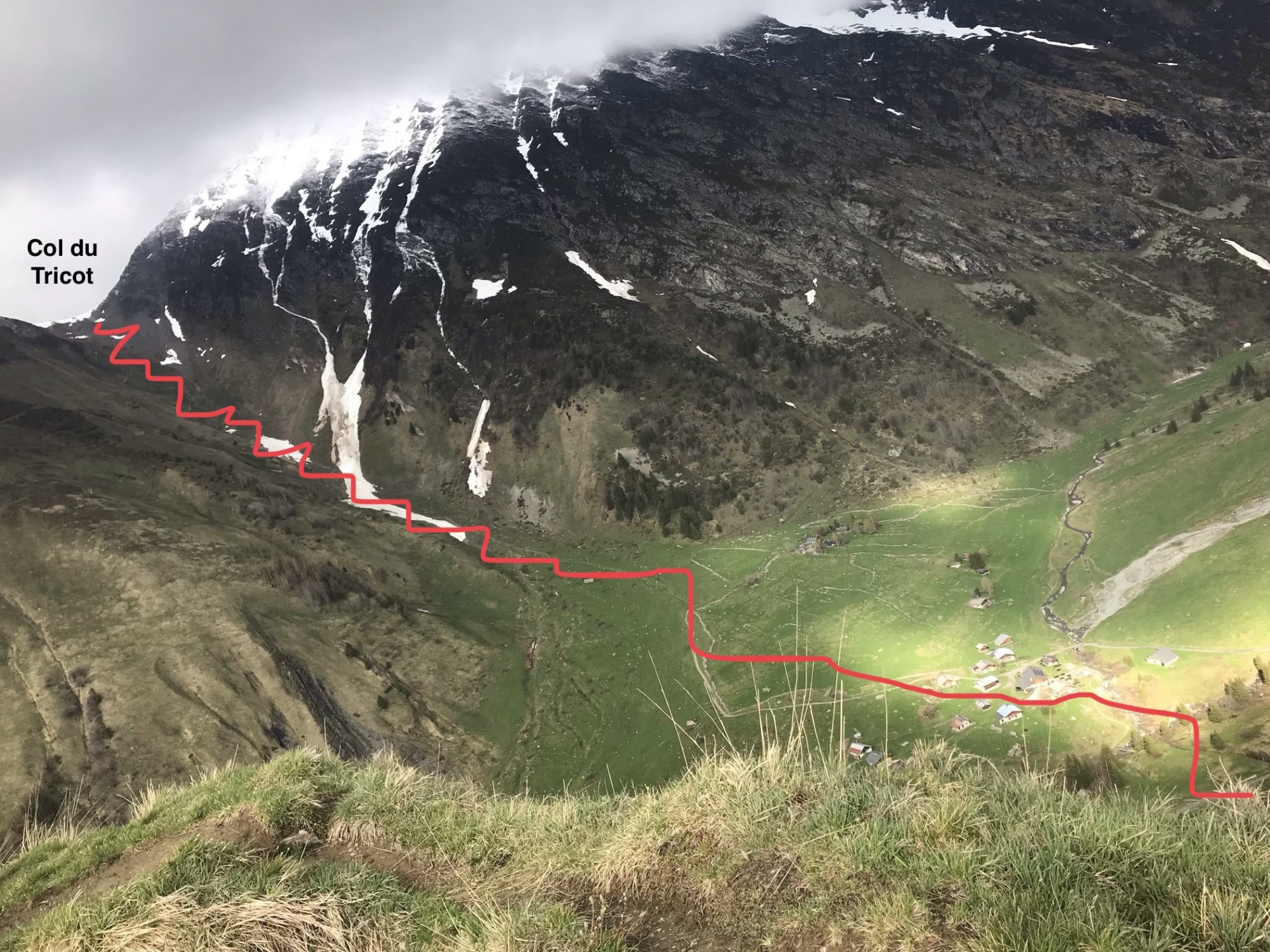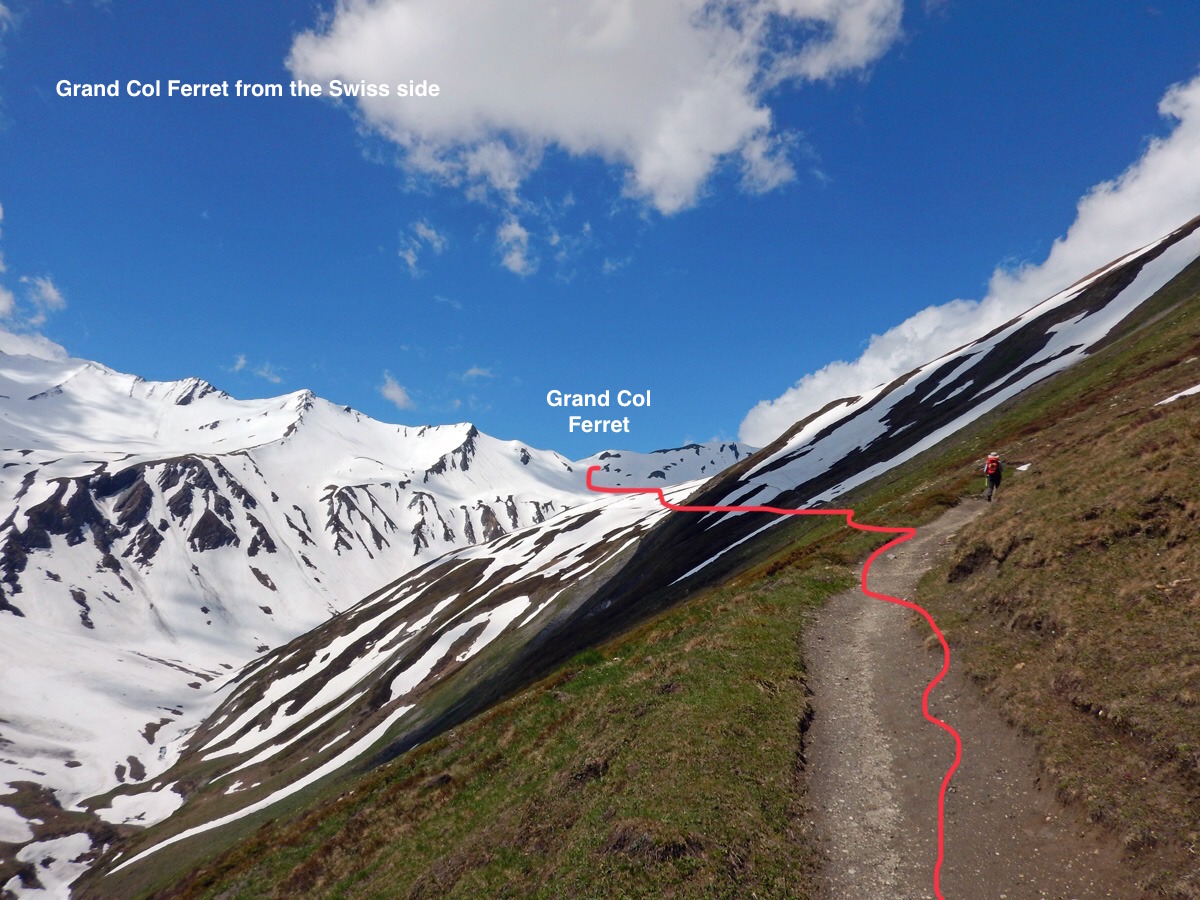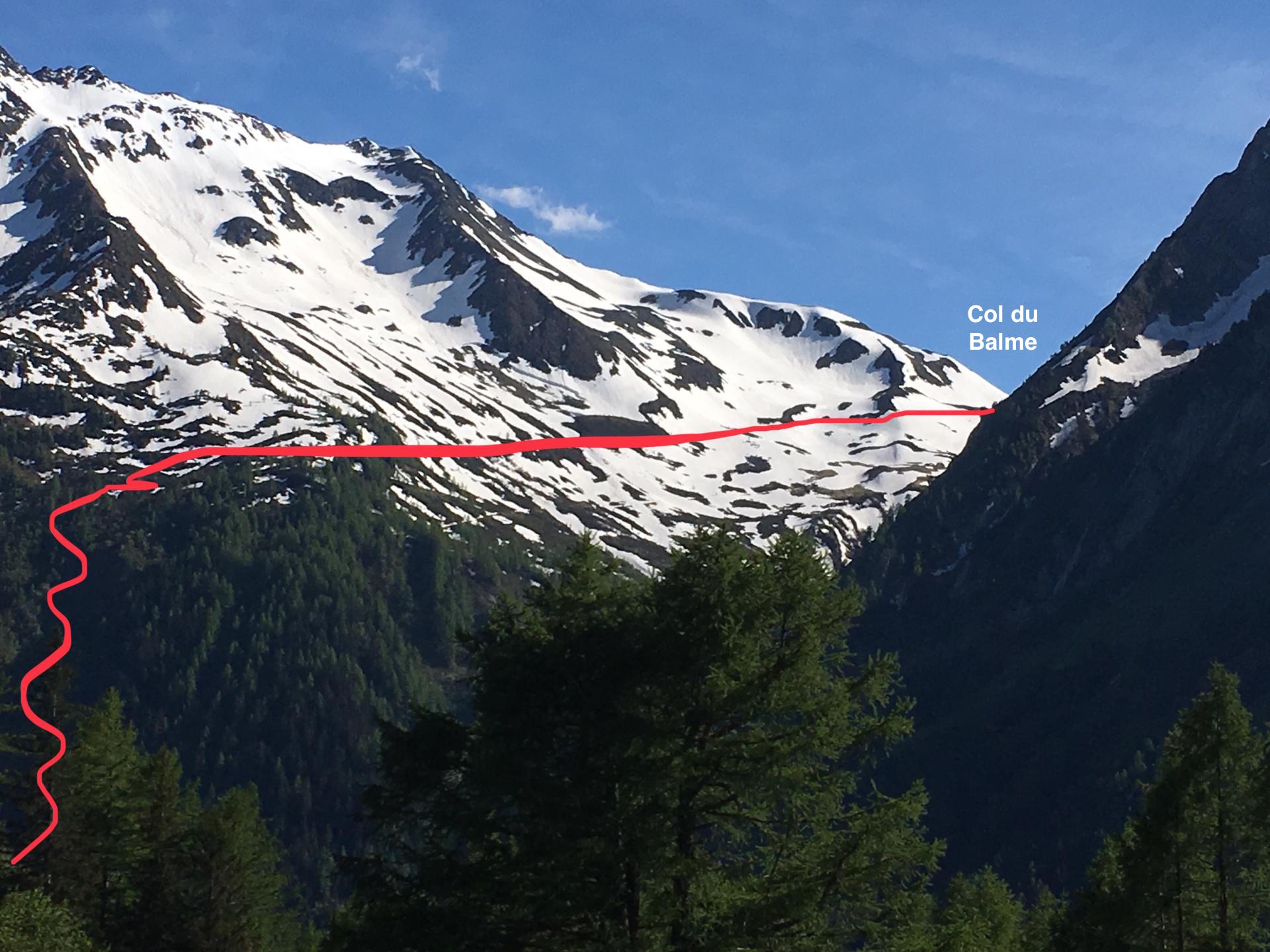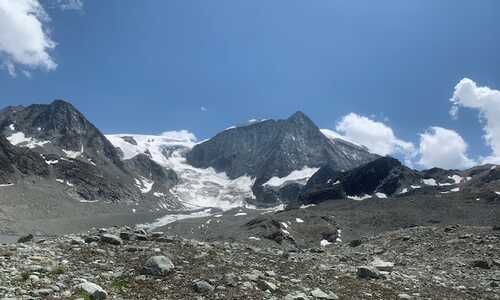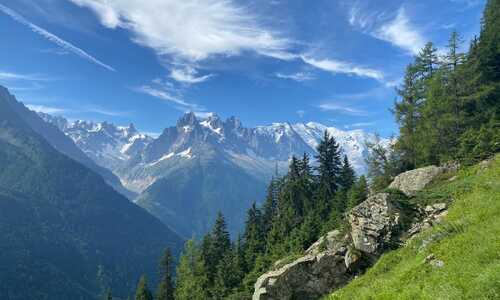Tour du Mont Trail Conditions June 2019
30/06/2019
Over the past week we have been out looking at the trail conditions in readiness for the start of the season.
Although we had an average snow fall last winter the spring has been very cold which has prevented the trails becoming snow free for the start of the season. However with the affects of climate change the current conditions are usual for June. In 2013, 2016 & 2018 we had equally challenging conditions and 2019 looks to be similar, therefore if you are trekking in early season you need to be prepared, equipped and know your limitations.
The situation is improving on a daily basis however the snow above 2000m especially on shaded & north facing slopes will take some weeks to disappear.
The challenging areas to note are:
- Contamines to Chapieux & Ville des Glaciers via the Col du Bonhomme & the Col de la Croix Bonhomme & Col des Fours (if going to Ville des Glaciers)
- Chapieux & Ville des Glaciers to Courmayeur via the Col de Seigne
- Refuge Bonatti to La Fouly via the Grand Col Ferret
- Champex to Trient via the Fenetre d’Arpette
-
For your own safety please take notice of any advice available, be aware of the additional challenges, know your limitations and where the route is not advisable and change your plans accordingly.
Snow on high ground this can make the route difficult and dangerous in places. A great deal of care needs to be taken when moving on old snow, depending on the weather & temperature this can be frozen solid or slush and without crampons can be impossible to cross without slipping. Ascending on snow can be often feel easy by kicking in steps & making good firm footholds however the main problems occur when traversing steep sided slops, gullies and in descent. Also great car needs to be taken when crossing snow covered streams in case of snow collapse. It is essential that you make a risk assessment before crossing snow, look below and ask yourself if you slipped how far would you slide & fall? Could a slip or fall cause injury? If in doubt retreat back and descend to the safety of the valley.
Tour du Mont Blanc in brief (if doing the westerly, easterly or ‘Best of’ refer to the relevant days)
Day 1: Chamonix to Les Houches: Advisable to take the vehicle track through the ski area to the Brevent summit, the Col de Brevent is not advisable as athere is a fair amount of snow around the ladders.
Day 2: Les Houches to Contamines: Passable via the col du Tricot however care must be taken. On the Les Houches side of the Col du Tricot there is a fair amount of uneven snow, which makes progress slow. On the descent to the Chalets du Miage is snow free the path has been scoured away by winter snow and great care needs to be taken as the terrain is steep. The route via Chapel is snow free and would be an easier trouble free option.
Day 3: Contamines to Chapieux or Ville des Glaciers: A great deal of snow above 2000m, this section is not advisable without having the correct equipment with you (see below). The traverse between the Col du Bonhomme & the Col du la Croix du Bonhomme can be very difficult with snow as a slip or fall here could cause serious injury. If staying at the Refuge Mottets it is advisable to follow the route card provided to Chapieux & take the road to Ville de Glaciers rather than go over the Col du Fours which is very steep in descent with snow.
Day 4: Chapieux or Ville des Glaciers to Courmayeur: A great deal of snow above 2000m, this section is not advisable without having the correct equipment with you (see below). We advise you take the bus or a taxi from La Visaille to Courmayeur as the route via the Mont Faurvre spur can be dangerous with this amount of snow, see here: SAVDA
Day 5: Courmayeur to Refuge Bonatti: ok via Refuge Bertone and the balcony route, do not take the higher options outlined in the guide-book. Care needs to be taken when traversing the sections of snow.
Day 6: Refuge Bonatti to La Fouly: A great deal of snow above 2000m, we advise to descend from the Refuge Bonatti to the Val Ferret and walk up the road to Arnuva then take the 4x4 track to refuge Elena do not attempt to take the TMB route up the gully, the bridge over the gully has not been re-instated as yet and crossing the snow bridge will be dangerous. This section is not advisable without having the correct equipment with you (see below).
Day 7: La Fouly to Champex: ok no problems, the route is snow free.
Day 8: Champex to Trient: ok via the Bovine route care needs to be taken when traversing the sections of snow.
The variant via the Fenetre d’Arpette is not passable, do not attempt to go this way as it is very steep at the col at either side, due to the amount of snow a slip or fall here could cause serious injury.
Day 9: Trient to Argentiere: There is still a significant amount of snow on the way up to Col du Balme care needs to be taken crossing the snow patches. Go direct to the Col from Trient rather than via Tseppes & Catogne. Little snow on the Chamonix side of the Col and the rest of the route is trouble free. Care needs to be taken when traversing the sections of snow.
Day 10: Argentiere to Chamonix: The Aiguille Rouges nature reserve still has a lot of snow, Lac Blanc is completely covered with snow and remains frozen. Therefore we advise to remain on the lower balcony to Flegere and do not ascend to Lac Cheserys and Lac Blanc, the route from Flegere to Brevent has no problems and is relatively snow free.
Essential kit:
All kit outlined on our kit list not forgetting good waterproof boots (not trainers or trail shoes), gloves, warm hat, warm layers, waterproof outer layers, sun cream & sunglasses to protect against snow glare.
Light weight crampons or MICROspikes & walking poles x 2 per person to aid balance, lightweight walking crampons can be hired locally in Chamonix, Snell sports is a good hire shop on the main street opposite the Maison de la Presse. Micro spikes (see picture) can be purchased from many of the shops in Chamonix.
Gaiters to keep the snow outof your boots when walking through snow.
Important to remember
Walking on snow can be very tiring and time consuming, you will need a good level of fitness in order to be able to cope with this additional challenge. You will also need to allow more time each day to get to your destination.
Snow and bad weather can make navigation difficult as you cannot see the designated path and route markets and signage will be covered with snow although you will find tracks in the snow. Good navigational skills are essential, the ability to read a map, use a compass and altimeter are a pre-requisite of this self-guided trek. You need good mountain sense and the ability to make your own decisions, it is your responsibility to select alternative routes from the information you have at hand (map, guidebook & route & safety cards etc).
For a better idea see the photos below & our recent YouTube video taken on the ascent to the Col du Bonhomme above Contamines: youtu.be/mR7TpBI21r0
Please contact us for further information and additional information on current conditions are available on the AuTourDuMontBlanc website: Au Tour du Mont Blanc
